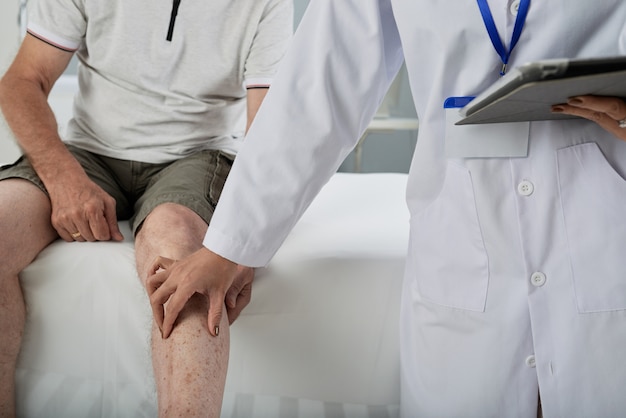
Thanks to Greek mythology, most of us have heard of the Achilles tendon, but not its other name: the calcaneal tendon. The story goes that Achilles’ mother dipped him into the River Styx to protect him from harm but held him by his heel, leaving that spot unprotected. Eventually, Achilles was killed by a poisoned arrow that hit this vulnerable spot.
The Achilles tendon is crucial for leg movement—it’s the largest tendon in the body, running two-thirds of the length of your leg. It connects the calf muscles to the heel bone, allowing us to walk. Given its importance and the heavy load it bears every day, it’s no wonder athletes commonly suffer from Achilles tendonitis.
Achilles tendonitis happens when the Achilles tendon gets inflamed, leading to soreness and potentially a rupture.
**Causes of Achilles Tendonitis**
While we put stress on our Achilles tendon daily, certain activities can push it to its limits. Stretching is key in preventing tendonitis, as is wearing supportive shoes. Activities that increase the risk include:
– Running too often
– Running on hard surfaces
– Frequent jumping
– Suddenly increasing exercise intensity without warming up
Young people are more likely to experience these symptoms, but older adults with arthritis might also get Achilles tendonitis due to bone spurs.
Achilles tendonitis isn’t linked to a specific injury; rather, repetitive stress and increased pressure make the tendon inflamed.
**Symptoms of Achilles Tendonitis**
Pain is the most obvious sign of an inflamed Achilles tendon, but other symptoms include:
– Heel pain when walking or running
– Pain when touching the tendon or a feeling of bruising, stiffness, or soreness
– Swelling and warmth around the area
– Inability to stand on your toes
– A burning sensation in the tendon
If you have these symptoms, see your doctor to determine if your tendon is inflamed or torn. Doctors can check with an MRI or ultrasound, looking for signs like increased blood flow, tendon fibril disorganization, or partial tears.
It’s crucial to have a medical assessment because symptoms of Achilles tendonitis can resemble other issues like stress fractures, nerve damage, or deep ankle injuries. Correct treatment will help you recover faster.
One challenging aspect of treating Achilles tendonitis is that pain might only appear at the start of exercise. Continued activity might make the pain go away, leading you to think there’s no problem, but continuing can worsen the condition and cause a tear. If you feel a burning sensation, stop exercising and consult a doctor.
If increased activity worsens your pain, you might have Achilles paratendonosis, which is inflammation of the fat around the tendon, not the tendon itself.
**Treatment of Achilles Tendonitis**
Achilles tendon injuries take time to heal, often up to two to three months. Besides reducing or stopping activities that cause pain and using softer surfaces for running or walking, doctors may recommend several treatments:
– Icing the area for 10-20 minutes daily to reduce inflammation. Avoid icing for longer to prevent frostbite and muscle damage and never ice before a run, as cold muscles are prone to tearing.
– Calf exercises, such as calf stretches or heel drops, to stretch and strengthen the surrounding muscles.
– Over-the-counter or prescribed anti-inflammatory drugs for pain and swelling. In severe cases, cortisone injections may be recommended, although they can damage the tendon.
– Extracorporeal shock wave therapy (ESWT) uses low-dose sound waves to promote healing. This quick procedure can be done in a doctor’s office. For ESWT to be used, the FDA requires that patients must have had heel pain for at least six months and tried at least three other treatments without relief.
Surgery is a last resort and can involve various procedures:
– Gastrocnemius recession: Lengthens the calf muscle to reduce Achilles tendon stress.
– Debridement and repair: Removes damaged parts of the tendon and repairs what’s left, possibly including the removal of bone spurs.
– Debridement with tendon transfer: Used when over 50% of the tendon is unhealthy. The extensor hallucis longus, which helps move the big toe, replaces the Achilles tendon.
Post-surgery recovery can take 12-16 months, and some patients might never return to competitive sports.